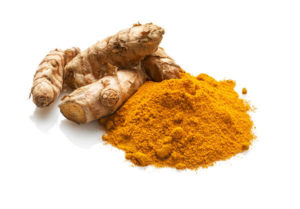
Turmeric has been used in South Asia for thousands of years in food, culture and medicine. Pots discovered near New Delhi uncovered residue from turmeric that dates back as early as 2500 BCE. Turmeric is an important part of the ancient Indian system of Ayurveda, which means “science of life” and is based on using natural plants to treat a variety of health ailments.
Turmeric is part of the ginger family and its botanical name is Curcuma longa. It’s a plant that is three feet high and produces both a flower and a rhizome, which is a stem found underground. The rhizome is a root-like stem that produces the yellow turmeric spice.
Curcumin, the chemical compound found in turmeric has powerful anti-inflammatory and antioxidant properties. Topical application of turmeric paste is used to treat sprains, cuts, swelling, infections and more. Oral consumption may alleviate indigestion, menstrual pains, arthritis and general body aches. Recent research suggests that turmeric is as effective as ibuprofen for reducing pain and inflammation.
Turmeric is most widely used in food and cooking. It’s a staple ingredient in many Asian dishes, giving them a mustard-like, earthy aroma with a slight bitter taste. It’s a principle ingredient in curry powders, but also used in a variety of other products, such as baked goods, dairy, ice cream, yogurt, cereal and sauces.
Aside from culinary uses, turmeric has religious and lifestyle purposes as well. It’s considered auspicious and sacred by the Hindu religion. Many Indian wedding traditions include the application of a turmeric paste called Haldi on the bride and groom. The age-old tradition is a symbol of blessing for the couple and a healthy marital life. Due to its vibrant yellow color, turmeric is often used as a dye in clothing and textiles.
If you are going to take turmeric as a supplement, it’s important to combine it with black pepper because it helps increase the bioavailability of turmeric.